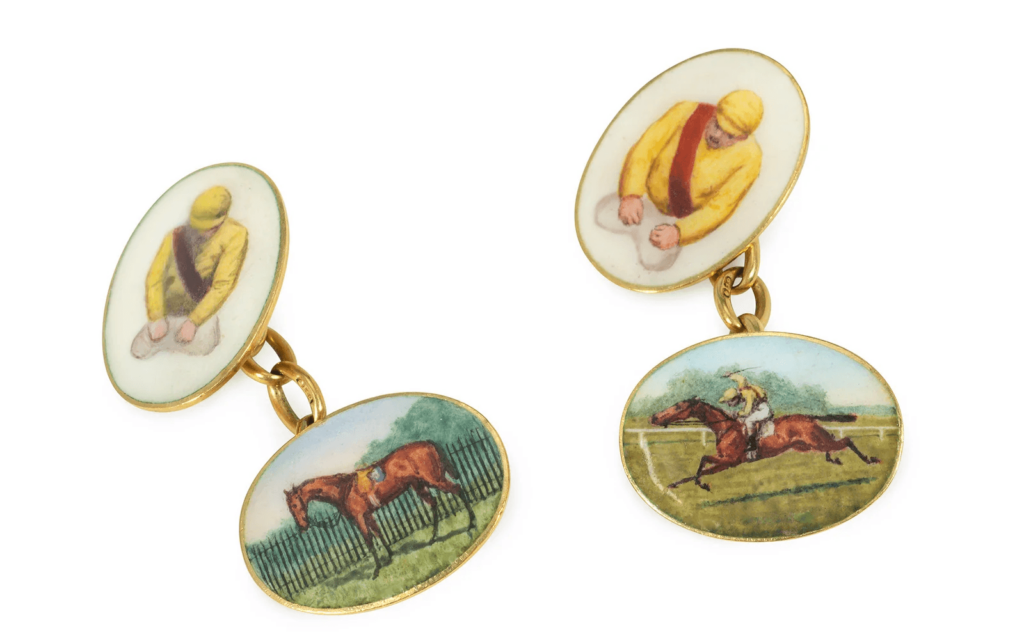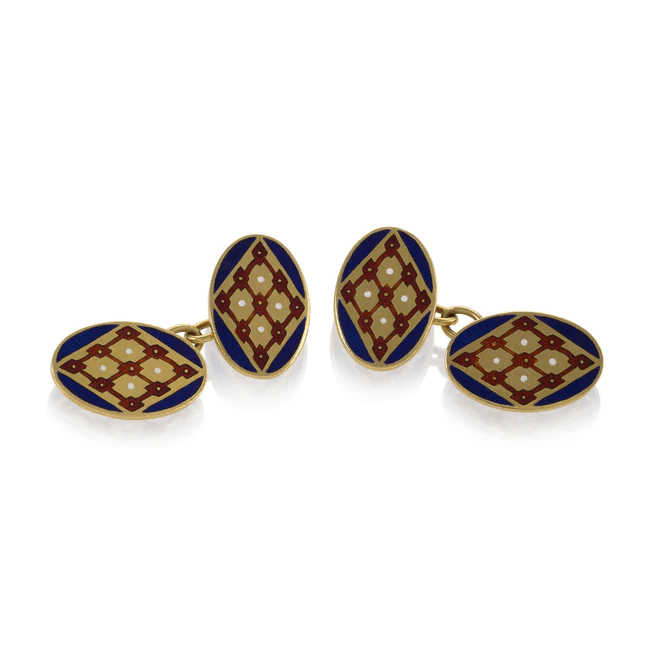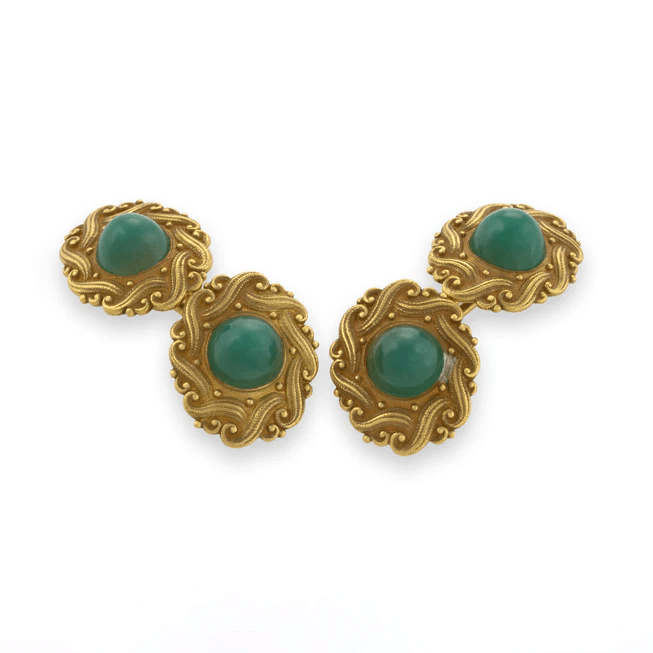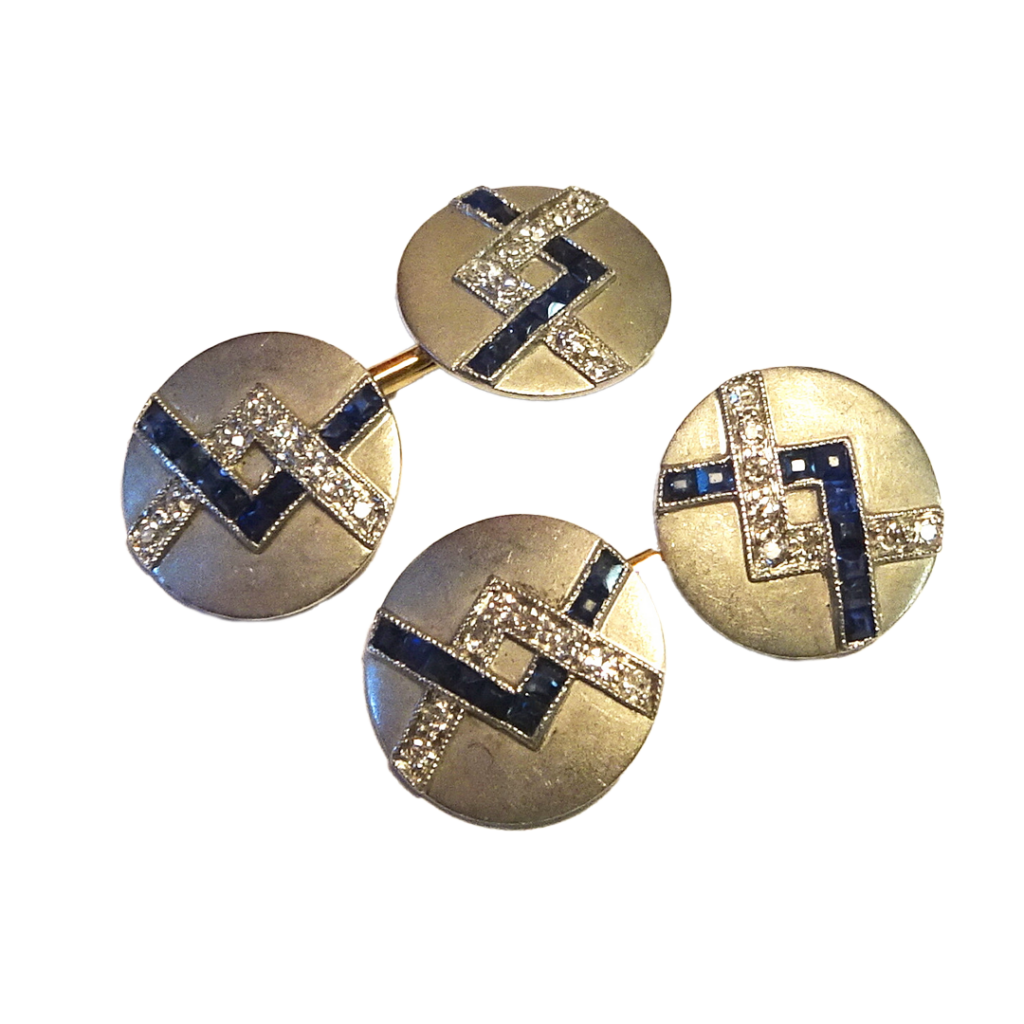Gifting a pair of cufflinks is a lovely gesture that dates back to the 1600s and 1700s and continues to be a ritual connected to graduation, wedding party gifts and more. Cufflinks come in all shapes, materials and designs, whatever you may fancy. Fashion plays a big role in the look of cufflinks and also how they came to be a part of a well-groomed man’s wardrobe.
To truly understand the origins of cufflinks we have to take a look at men’s fashion through the years, especially the shirt. Originally men’s shirts were made to pull over the head because they didn’t have buttons. The sleeves, were big and billowing with cuffs that needed a closure. To accommodate this need, a string, leather cord, or if you were wealthy, ribbon, as it was very expensive, was used to tie the cuffs closed.
Bouton de Manchettes
During the middle of the 13th century reinforced button holes were developed, which allowed for a new way of closing cuffs. But it was during the 1600s that the precursor to what we know today as cufflinks developed. The button holes were connected by decorative buttons, known as bouton de manchettes, which is French for sleeve buttons. These sleeve buttons were comprised of two buttons held together by a small chain. Bouton de manchettes became very popular with royals, nobility and the upper echelons of society. Jewelers began making sleeve buttons from precious metals and gemstones. They were labor intensive, hard to make and as a result very expensive, which is why they were only worn by the elite. England’s King Charles II, who ruled from 1660 through 1685, was a known fashionista of the time and he adored cufflinks and wore them often bringing them to prominence.
Gifting Cufflinks

During the 1700s cufflinks became even more popular with the ruling class who were the only ones with enough money to buy them and they were often commissioned for specific occasions. The upper-crust wore cufflinks to royal events and special occasions, or to commemorate an important milestone. These jewels were often adorned with initials, crests or other designs and were a symbol of wealth and status. Interestingly, cufflinks during this period were gifted rather than self-purchased and most cufflink collections got started that way.
Victorian Style
Cufflinks really took off during the 1800s for a couple of reasons. The Industrial Revolution allowed cufflinks to be made more easily making them more affordable to a broader range of society. It also created a lot of new wealth and a middle class that worked in office jobs. Fashion changed quite a bit in the 1800s and men generally wore suits during the day and dinner coats or waistcoats for more formal occasions. Strict dress codes of the Victorian era made it mandatory for the newly minted middle class to wear a white shirt. These shirts had highly starched cuffs that were large, squarish-shaped and hard due to the amount of starch used, making them difficult, if not impossible, to button. This of course created a need for cufflinks.
In the early 1800s cufflinks also got a boost in popularity through pop culture. Author Alexander Dumas wrote the adventure books “The Count of Monte Cristo” and “The Three Musketeers” both of which included characters who wore cufflinks that were described in detail.
In 1866 cufflinks became even more popular and more accessible when Newark, New Jersey-based Krementz & Co., inspired by a bullet making machine, developed new machinery for manufacturing these accessories. This invention made cufflinks faster and easier to produce so they became accessible to a mass market at a less expensive price. Years later the company also produced ads promoting cufflinks that further sealed their place in fashion.
There was also a little bit of intrigue associated with cufflinks. During the late 1800s, some cufflinks, allegedly had a secret compartment that held a photo and some men used it as a way to hide an image of their lover. Cufflinks during this time were also designed to reflect the interests of the person wearing them, sports themes, such as horse racing or sailing, were a popular motif.
Twentieth Century Cufflinks
King Edward VII, another fashionista King, who loved to party and dress up also wore cufflinks. The formality of the Victorian era continued into Edward’s reign making cufflinks an even more important accessory for men. Cufflinks reached the peak of popularity during the early 1900s when people dressed up to go out to clubs and parties. They maintained their popularity into the middle of the century, when changes in fashion and lifestyle made them less necessary. Men’s dress shirts came with cuff buttons, so there was no need for cufflinks. At the same time, a more casual lifestyle was taking hold. Cufflinks were still worn for special occasions, black-tie events or weddings, but most people stopped wearing them as an everyday part of their wardrobe.
Cufflinks are making a big comeback today as apparel takes a turn to sharp tailoring and luxe details. They can also be adapted to more casual wear, such as a French cuff shirt worn with shorts, sneakers and of course cufflinks, it’s a way to add a finishing touch to a casual outfit that takes it up a notch. Today, cufflinks are no longer the exclusive domain of men, women sometimes don these lovely baubles as well when wearing a suit, after all like most jewelry, cufflinks are another way to show the world your unique style and personality.
Featured image (top of page): Actor Daniel Craig as James Bond in Skyfall, wearing cufflinks.
Authored by Amber Michelle




